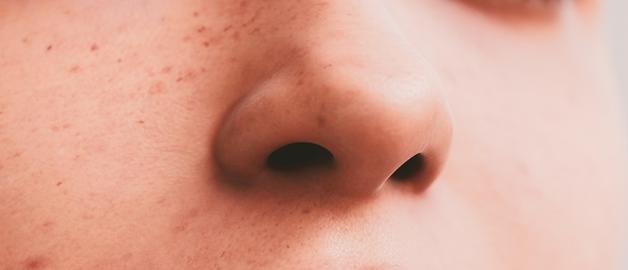No parent expects their own reflection—or that of their teenager—to be interrupted by a stubborn, uneven flush of brown or grayish patches. And yet, melasma can appear, often suddenly, challenging both self-image and daily routines. Why does melasma choose some faces and not others? How can families respond—emotionally and practically—when this facial pigmentation settles in? From sun protection to medical strategies, understanding melasma lifts much of the uncertainty. Let’s clarify what those facial marks indicate, decipher the science behind their persistence, and highlight solutions that blend modern dermatology with everyday pragmatism.
What Exactly Is Melasma? Recognizing and Understanding the Mask of Many Faces
Imagine glancing in the mirror and noticing irregular, somewhat symmetrical patches—light brown or darker, sometimes tinged with gray—spreading across the cheeks, nose, forehead, or upper lip. This is the classic presentation of melasma, a phenomenon also called chloasma or the “mask of pregnancy.” It’s not limited to pregnancy, nor exclusive to women, but it is about nine times more common in females, especially between ages 20 and 40. It frequently appears during pregnancy, influenced by surges in estrogen and progesterone, yet families of Middle Eastern, Asian, African, and Hispanic descent—who often have darker skin phototypes—discover an even higher chance that melasma enters their world.
Melasma is benign, meaning it carries no immediate risk of physical harm. Nonetheless, its emotional impact is enough to rattle even the most confident parents or self-assured adolescents. Reflecting on the sudden visibility that melasma brings, especially when questions arise from peers or colleagues, can reshape one’s sense of self. Why does melasma prefer sun-exposed skin? Simple: UV and even visible light awaken melanocytes—the pigment-producing champions of our skin—causing them to distribute more melanin unevenly, creating pronounced discoloration.
Spotting Melasma: Patterns, Skin Science, and What Sets It Apart
Is it a freckle? Not quite. Is it post-acne marks? Also, not really. The hallmark of melasma includes its tendency to cluster in “photoexposed” zones—those most skyward on a sunny walk, like the cheeks, forehead, upper lip, and chin. The patches’ symmetrical, persistent nature hints at deeper causes than mere sunburn. Three main melasma types stand out:
- Epidermal melasma: Distinct borders, lighter brown, sits closer to the skin’s surface and often yields better to therapy.
- Dermal melasma: Bluish-gray, fuzzier edges, notoriously persistent.
- Mixed melasma: True to its name, combines both features and often resists improvement.
A dermatologist, using Wood’s lamp (a device emitting ultraviolet light), can differentiate between pigment resting in the epidermis (more superficial) and that sinking into the dermis (deeper). This matters: surface pigment fades more readily; deeper pigment, especially amid repeated sun exposure or hormonal swings, holds its ground far longer. The Melasma Area and Severity Index (MASI) sometimes helps monitor these subtle evolutions. Family history can elevate risk further, strengthening the case for careful, personalized evaluation.
Why Melasma Develops: Genetics, Hormones, and the Relentless Sun
Unpredictable, yet patterned—melasma’s triggers rarely follow simple logic. Genetics send the first signal: families already familiar with melasma pass along risk, sometimes alongside ethnic predisposition. Next comes the sunlight, more powerful than it appears through clouds or glass. Both ultraviolet (UV) rays and visible blue light prompt excess melanin, the skin’s natural pigment. During pregnancy or with hormonal contraception, hormonal surges (especially estrogen and progesterone) seem to “supercharge” melanocytes, inviting melasma to the party.
But sunlight and hormones aren’t the entire story. Certain medications (like some antiepileptics), cosmetics with photosensitizing ingredients, thyroid disturbances, even bouts of emotional or oxidative stress—each may tilt the balance, coaxing pigment to gather in patterns as unique as a fingerprint. Frequent friction or harsh exfoliants leave the protective barrier vulnerable, while photo-reactive plant oils add another layer of risk. Why do some patches outlast others? Melanocyte memory is partly to blame: once “sensitized,” these cells often respond dramatically to familiar triggers, which explains melasma’s tendency to recur with each summer or new pregnancy.
Diagnosing Melasma: Clinical Clues and Science in Practice
Diagnosis rests on careful observation. Dermatologists search for symmetry, patch color, and distribution—but also seek to exclude other pigmented lesions such as lentigines, lichen planus pigmentosus, or even drug-induced changes. Where a Wood’s lamp can highlight superficial pigment, persistent or complex cases sometimes require biopsies to rule out rare conditions.
A helpful tip for parents: ask about the depth of pigment—epidermal versus dermal. The prognosis hinges on this subtle distinction. Monitoring tools like colorimetry or the MASI score help track progress, measure response to treatment, and set realistic expectations.
The Day-to-Day Impact: Balancing Self-Perception and Family Dynamics
For adults—especially mothers—melasma can weigh heavy on self-confidence. Family photos, casual outings, and workplace meetings prompt anxiety about appearance. Younger family members struggling with melasma may face questions, teasing, or their own inner criticisms. Some days, marks darken, especially after a beach trip; other times, winter brings a gentle fading, yet resolution remains elusive.
Psychological support transforms this journey from isolation to resilience. Whether leaning on a spouse, fellow parents, friends, or a trusted healthcare professional, open acknowledgment of the emotional toll is essential. For those needing a boost, certain non-comedogenic, easily removable makeup products or tinted mineral sunscreens (particularly those containing iron oxides) offer both protection and restoring confidence.
Preventing Melasma: Daily Routines and Science-Backed Habits
Sun Defense: The Unquestionable Starting Point
Imagine a shield invisible yet powerful: that’s what consistent, high-SPF, broad-spectrum sun protection provides. Mineral-based products enriched with both physical (zinc oxide, titanium dioxide) and visible light blockers, particularly safe during pregnancy, make a marked difference. Generosity is key—apply more than you might think, and reapply frequently. Combined with wide-brimmed hats and UV-blocking sunglasses, parents carve out a robust frontline defense.
Choose to stay in the shade, or plan outdoor activities before 11 a.m. or after 3 p.m. Even on cloudy days, UV rays reach the skin, and yes, glass windows do let some harmful rays pass through.
Gentle Skincare: Supporting Skin’s Natural Barrier
Skin affected by melasma deserves tenderness, especially in hormonal shifts like pregnancy. Use fragrance-free, soap-free cleansers and lightweight moisturizers labeled “non-comedogenic.” Avoid abrasive scrubs and skip strong active ingredients, such as retinoids or chemical exfoliants, which are not advised while pregnant. Patting skin dry instead of rubbing further protects the delicate surface. Internal hydration, via regular water intake, quietly supports skin resilience.
Nutrition: More Than Skin Deep
Do avocados, leafy greens, and nuts make melasma vanish? Not exactly—but a diet rich in antioxidant nutrients like vitamins C and E, folic acid, and essential fatty acids can support repair from the inside. Brewer’s yeast, citrus, and vegetables supply valuable building blocks. Highly processed, inflammatory foods, on the other hand, can add to the burden and are best enjoyed sparingly.
Evidence-Based Strategies to Treat Melasma
Pregnancy-Related Melasma: Patience Makes a Difference
After childbirth, the landscape may shift: melasma often fades, though at a glacial pace—months, sometimes more than a year, of waiting and protecting before natural improvement occurs. Persistence is its hallmark, but gradual fading is common if new triggers are avoided. Follow-up with a qualified dermatologist can confirm diagnosis and suggest next steps for lingering patches.
Active Treatments (Post-Pregnancy, Breastfeeding)
For stubborn, persistent melasma, dermatological care opens up more options:
- Depigmenting creams: Topical agents like hydroquinone, azelaic acid, tretinoin, and sometimes vitamin C effectively reduce pigment (though certain ingredients, like hydroquinone and retinoids, are best reserved for after pregnancy and breastfeeding).
- Triple therapy combinations: Carefully supervised blends of hydroquinone, a retinoid, and a mild corticosteroid are sometimes deployed for severe patterns.
- Chemical peels: AHAs such as glycolic or salicylic acid—administered by professionals—exfoliate gently, brightening the affected areas over time.
- Laser and light therapies: Procedures including Q-switched laser and intense pulsed light bring options for resistant cases, especially under the watchful eye of an expert familiar with melasma’s tendencies in darker skin types.
- Microneedling: Sometimes, this method enhances the penetration of topical therapies, nudging pigment back into balance.
- Oral therapies and supplements: Tranexamic acid, and antioxidant supplements like Polypodium leucotomos extract, offer additional support, especially when topical regimens are insufficient.
Gentle Alternatives: When Caution Is Required
For those seeking a softer touch (or managing melasma during pregnancy), natural actives such as niacinamide, vitamin C, and glabridin (licorice-derived) gently encourage pigment regulation. Soft exfoliation with oats or homemade yogurt masks adds a comforting ritual, with minimal risk. Essential oils and photosensitizing botanicals, however, deserve cautious avoidance, especially for expecting parents.
Camouflage with Confidence
Practical, effective camouflage exists. Creams and powders rich in iron oxides not only even out skin tone but deliver an extra layer of defense against visible blue light—a subtle but genuine trigger for melasma recurrence. These makeup solutions restore composure during treatment, with the added bonus of easy removal.
Handling Recurrences and Managing Long-Term Risks
Melasma tends to echo—summer after summer, hormonal phase after hormonal phase. The best remedy is proactive prevention: steady sun avoidance, unwavering skin gentleness, and prompt adjustment at the earliest sign of new pigment. Overzealous use of potent products, like hydroquinone, brings hazards—skin irritation and, rarely, stubborn blue-black discoloration (known as exogenous ochronosis). Regular check-ins with a dermatologist ensure that therapies provide benefit with minimal risk, and that regimens evolve alongside each stage of family life.
Navigating Melasma in Special Cases
- Pregnancy: Sun protection is non-negotiable. Of all treatment ingredients, azelaic acid stands out for its safety.
- Children and men: While infrequent, cases in these groups require the same gentle touch and tailored medical advice—never one-size-fits-all.
- Darker skin types: Parents with more melanin-rich skin need personalized guidance, as aggressive approaches sometimes worsen pigmentary changes instead of lightening them.
Dermatology Insights: Dispelling Myths and Rethinking Old Wisdom
It’s easy to misconstrue melasma as a concern for only lighter phototypes—scientific evidence confirms the opposite. The more pigment a skin type naturally produces, the greater the odds and intensity of melasma. Contrary to past beliefs, corrective makeup does not worsen melasma if chosen wisely and paired with a gentle cleansing ritual.
Medical consensus favors natural depigmenting agents for mild cases and reserves potent formulations for supervised use. Total disappearance of melasma can be elusive, particularly when environmental or hormonal factors persist, but substantial improvement remains a realistic aim.
On the Horizon: New Avenues in Melasma Management
Science is not standing still. New topical molecules—such as thiamidol and cysteamine—offer promise with gentler effects. Antioxidant supplements, ranging from Pycnogenol to enhanced Polypodium extracts, are under active investigation. Laser innovation, platelet-rich plasma, and advanced personalized skincare (reflecting each individual’s genetics and hormonal profile) open the door to more refined, targeted control of melasma in years to come.
Key Takeaways
- Melasma, though harmless, can affect confidence and daily life—especially in women of childbearing age or those with darker skin phototypes.
- Consistent sun protection, gentle skincare routines, and an antioxidant-rich diet form the foundation of managing melasma.
- Most pregnancy-associated melasma regresses over many months, but persistent patches can benefit from professional dermatological evaluation.
- Medical and cosmetic interventions, if needed, should be tailored and supervised—never one-size-fits-all.
- Resources, including high-quality health apps like Heloa, connect families to practical advice, custom questionnaires, and ongoing support for children’s and parents’ skin health concerns.
- Professional and peer support bolsters emotional well-being, reassuring families that personalized solutions and future advancements await.
For parents facing melasma, evidence-based habits, an open approach to wellbeing, and up-to-date resources set the stage for resilience—ensuring those stubborn patches never define your family’s sense of self or comfort.
Questions Parents Ask
Can melasma go away on its own?
Melasma can sometimes fade gradually, especially if it was triggered by pregnancy or hormonal changes that have since resolved. In many cases, patches become lighter with time, particularly when sun protection is maintained and skin is treated gently. However, melasma may persist or return if triggers like sun exposure or hormonal fluctuations reappear. Rassurez-vous, even if complete disappearance takes time, milder forms often improve without aggressive treatment. Support from a dermatologist can guide parents toward the most comfortable, personalized approach.
Is melasma hereditary?
There is indeed a genetic component to melasma. If other family members have experienced similar pigmentation changes, the risk may be slightly higher. This hereditary tendency means that even with good sun protection, certain parents or children may notice brown patches developing. This is no one’s fault—just a matter of skin’s unique temperament. Understanding the genetic link helps families remain attentive to gentle skincare and prevention early on, offering reassurance and tailored support.
What is the best sunscreen for melasma?
For parents concerned about melasma, daily use of a broad-spectrum sunscreen is especially important. Formulas containing mineral filters such as zinc oxide or titanium dioxide protect against both UVA and UVB rays. Choosing a sunscreen with added ingredients like iron oxides provides extra defense against visible light, which can also worsen melasma. Prefer fragrance-free and non-comedogenic options to suit sensitive or family-prone skin. Reapplication is essential, particularly after sweating, swimming, or towel drying, offering steady reassurance that each family member’s skin is cared for.








